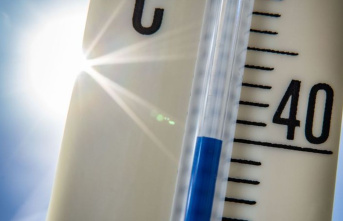Richard Tyler Blevins, better known in the gaming world as “Ninja,” is a streaming superstar. No gamer is followed by more people on Twitch than him. There are 19 million on the platform alone, and on YouTube there are another 24 million. “Ninja” now also used his reach to motivate his fans to prevent cancer. And for good reason: As he wrote on "X", he was recently diagnosed with melanoma. Malignant melanoma is considered the most dangerous form of skin cancer. This is the skin tumor with the highest metastasis rate.
The mole on the underside of his foot was noticed during a skin cancer screening appointment a few weeks ago. After it was removed preventively and sent to the laboratory, it turned out that it was actually cancer. "They are optimistic that we discovered it in the early stages," he told his fans. However, on the day of his post, another dark spot was discovered near the first mole, which was removed. The biopsy still has to clarify whether this spot is also a melanoma. "I'm grateful and it gives me hope that we found it early," Blevins said. And: “Please understand this as an invitation to have your skin examined.”
The type of cancer that Blevins says he is affected by is called malignant melanoma or black skin cancer. Experts believe that the most important cause for the development of cancer is strong and repetitive UV exposure, which leads to sunburns and regular visits to tanning salons. It is particularly risky when children and young people are exposed to intensive UV radiation. Genetic predisposition also plays a role. "People with several individual risk factors, such as fair skin, reddish or blonde hair, a tendency to freckles, sunburn spots or a relative with malignant melanoma, can have an up to 120-fold increased risk of developing malignant melanoma," explains the cancer society .
In Germany, skin cancer is one of the most common cancers. The National Association of Statutory Health Insurance Physicians reports that more than 230,000 people in this country develop new skin cancer every year. Around 28,000 of the cases involve the dangerous form of black skin cancer. As the German Cancer Society reports, 20 out of 100,000 women and 21 out of 100,000 men were diagnosed with black skin cancer in 2016.
“A doubling of new disease rates among men in the next 20 years and among women in the next 30 years is expected,” writes the German Cancer Society. On average, women are 67 years old and men 60 years old when malignant melanoma occurs. In two thirds of cases, malignant melanomas are detected very early, so that the affected ones are cured after surgical removal.
As a rule, people with statutory health insurance in Germany aged 35 and over can have a free skin cancer check every two years. Dermatologists usually do this, but some general practitioners are also qualified. Some health insurance companies also take over the pension checks earlier.
Regardless of the doctor, everyone should take a look at themselves and pay attention to any skin changes. The so-called ABCDE rule is helpful here.
A - stands for asymmetryA benign mole usually has a uniform shape, for example round or oval. Black skin cancer, on the other hand, is usually asymmetrical and uneven.
B - stands for border. If the spot has jagged, blurred or uneven edges, this may indicate a malignant skin tumor.
C - stands for Color If a birthmark has different colors and not a uniform one, it should be checked.
D – stands for diameter. If the spots are larger than five millimeters in diameter, they should be checked.
E - stands for developmentIf you notice that a mole is changing, this can also be a sign of skin cancer.
Around one in five people will get cancer in the course of their life, and the trend is rising, according to the International Agency for Research on Cancer, which is part of the World Health Organization (WHO). In 2022, 20 million new cancer diagnoses were made worldwide. According to forecasts, the number is expected to rise to 35 million by 2050. That would be an increase of 77 percent.
The highest increase is expected in the most developed countries. The reason for the increasing number of new cancer cases is, among other things, a lifestyle that is unfavorable to health. The risk factors include air pollution, obesity, alcohol and smoking. The most common forms of cancer are breast, lung and colon cancer in women and lung, prostate and colon cancer in men.
Sources: CNN, German Cancer Society, WHO, X, Tübingen University Hospital












